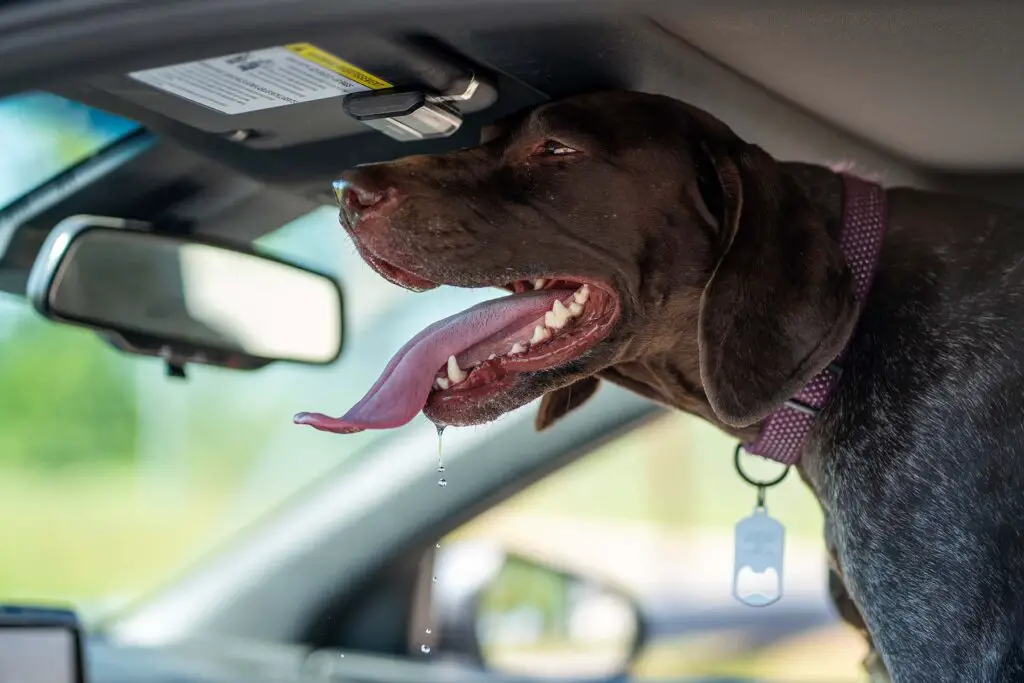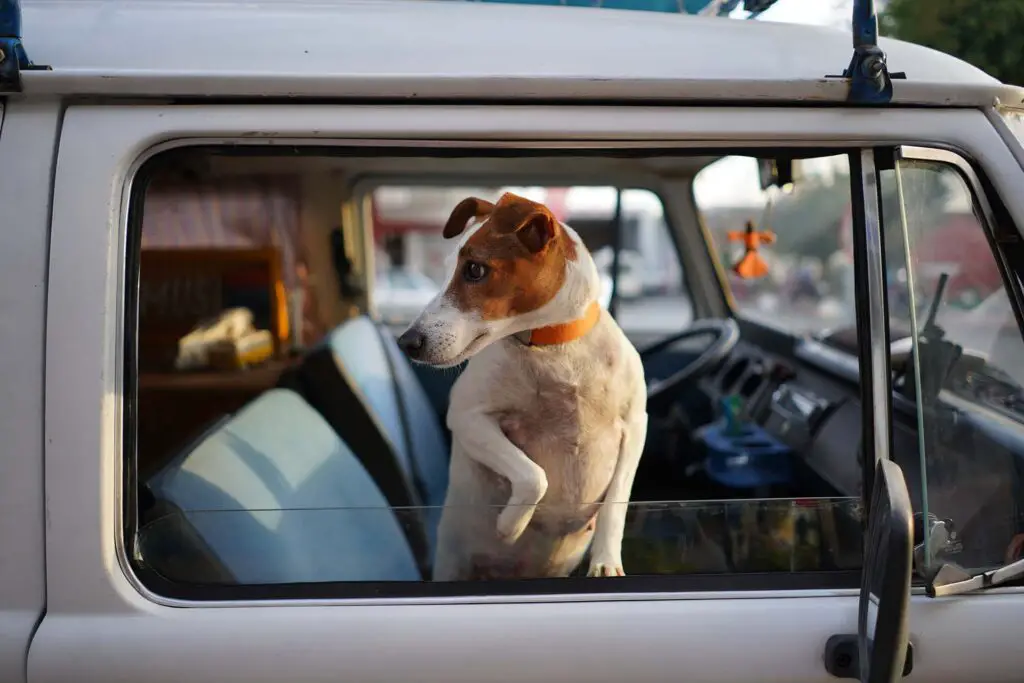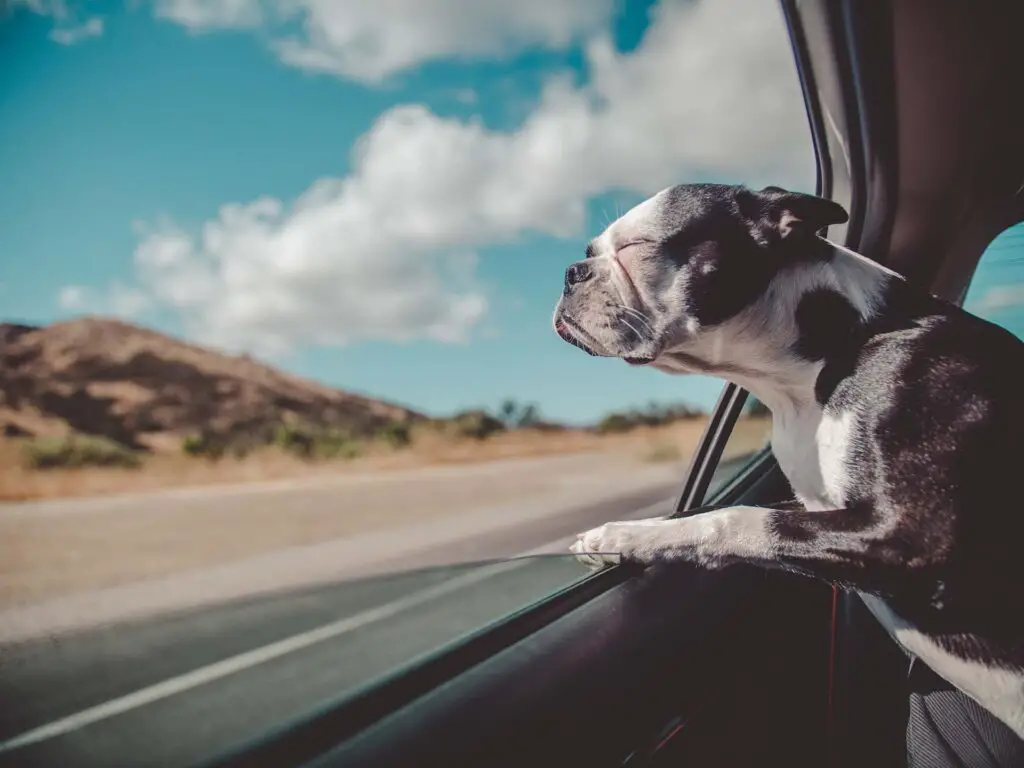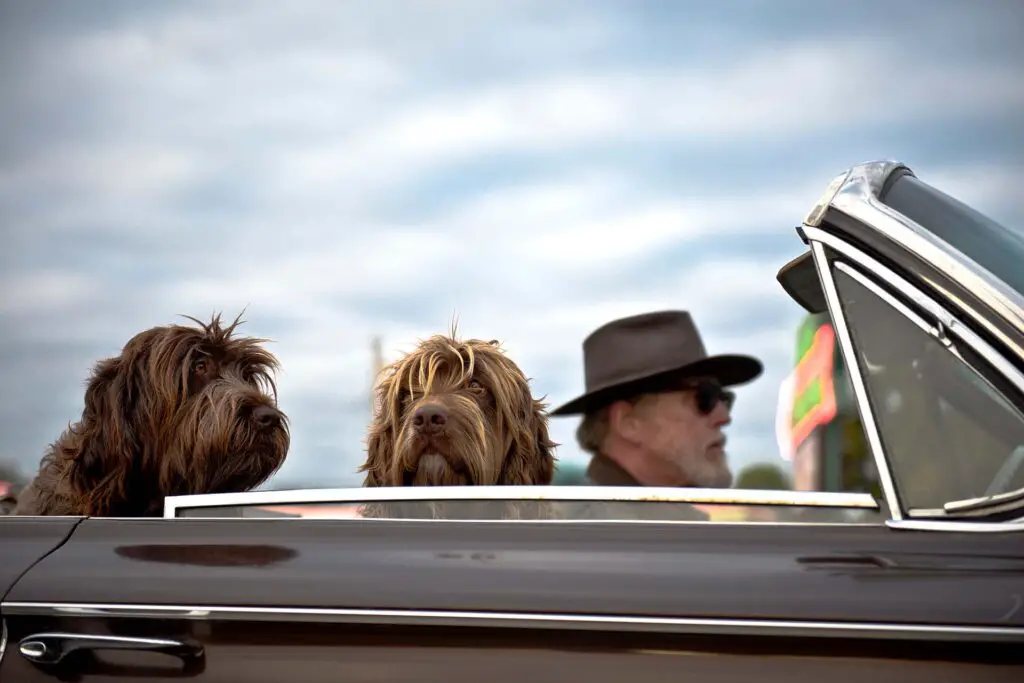Are you ready to hit the highway with your furry four-legged friend? Whether a quick trip to the pet store or a fun-filled road trip, you need to know how to seat belt a dog in a car. It may not seem like it, but securing your canine companion can be just as important as buckling yourself into the driver’s seat. So, here are some helpful tips and tricks to ensure your furry BFF is safe and sound once you hit the open road together.
Keeping your dog secured while driving is crucial for ensuring safety and minimizing distractions. There’s a wide variety of restraint options, such as seat belts, harnesses, and crates. These items should be securely attached to the car’s seat belt buckle, ensuring your pet has enough room to sit, stand, lie down, and move comfortably. Once you’ve adjusted it to a snug fit and double-checked how secure it is, it’s time to embark on your adventure together.
What Are the Risks of Unrestrained Dogs in Cars?
Removing dog hair is not the only concern you must consider when traveling with your furry companion. The whole ordeal can be a fun adventure, but it’s crucial to understand the risks associated with having unrestrained canines in moving vehicles.
Here are the potential dangers that can be caused by failing to properly secure your pet:
- Distraction – Dogs are naturally curious beings, and that’s why we fell in love with them in the first place. However, this curiosity can sometimes lead to unpredictable behavior, such as jumping on the driver’s lap, obstructing the view, or causing sudden movements. These actions can divert the driver’s attention, leading to reduced focus on the road and an increased likelihood of accidents.
- Injury – In the unfortunate event of a collision or sudden braking, unrestrained dogs can become projectiles within the vehicle. They may collide with car windows or other occupants, leading to broken bones, lacerations, or head trauma. Such injuries can be both painful for the dog and potentially life-threatening.
- Ejection – Probably the most alarming risk is the possibility of a dog being ejected from the vehicle during an accident. Even a minor collision or sudden stop can propel an unrestrained dog out of an open window or the car’s windshield, causing severe injuries or even fatalities.
Consider This a Driver’s Responsibility Before Hitting the Road
To mitigate these risks and ensure the safety of your furry friend, consider properly securing them as one of the driver’s responsibilities. Doing so not only safeguards their well-being but also promotes responsible pet ownership. Various restraint options are available, and these safety items provide stability, limit movement, and minimize the potential for injury or distraction.

How to Choose the Right Restraint System
When it comes to securing your canine companion during car rides, there are several options available, and each of them has its advantages and considerations. The most common way to go about this is probably using dog seat belts, which are specifically designed to secure your pet to the vehicle’s seat belt system.
Then, there are harnesses, which are also attached to the seat belt system or directly connected to the car’s LATCH anchors. Using a crate or a pet carrier is another great option, as they provide a confined space for your canine, limiting their movement and protecting them from potential injuries.
To better understand these options, here’s an overview of the pros and cons of each one:
| Type of Restraint | Pros | Cons |
| Seat Belts | Adjustable to accommodate different sizes | May not provide as much comfort as other options |
| Harnesses | Allows more freedom of movement | Some dogs may slip out of poorly fitted harnesses |
| Crates | Great for anxious dogs with motion sickness | Requires additional space in the vehicle |
Tips for Selecting the Right Restraint System for Your Pet
While weighing the pros and cons of these options, it’s crucial to consider your dog’s size, behavior, and comfort. If your furry friend tends to be restless when traveling, it’s best to go for a harness or crate, as these options help to restrict excessive movement. On the other hand, a seat belt is suitable for calmer dogs, allowing more mobility.
Obviously, it’s important to take into account the size of your pet, as it will help ensure a secure and snug fit without being too restrictive. Also, prioritize your dog’s comfort by choosing options with padding or soft materials – your canine companion should enjoy the ride through the famous routes in the US just as much as you do.

How to Seat Belt a Dog in a Car – A Step-By-Step Guide
Now that you understand the importance of knowing how to secure your dog in the car with a leash and seat belt or a harness, it’s time to get down to it and explain the proper way of doing it. So, here’s a comprehensive step-by-step guide for safely traveling with your canine companion:
Step 1: Select a Suitable Seat Belt or Harness Designed for Dogs
As mentioned earlier, there are plenty of different options when it comes to securing your pet inside the vehicle. It’s best to go for sturdy and adjustable restraints such as the COOYOO 3-Piece Set. As it’s a universal fit and will ensure your furry friend is nice and snug. It’s also made from durable material, ensuring it will serve you well for a long time. Even if your dog takes a particular liking to pulling or chewing on it.
Step 2: Introduce Your Dog to the Restraint System and Car Environment
Before using the chosen seat belt or harness, it’s crucial to introduce your pet to the restraint system you’re using and the environment of your four-wheeler. Allow them to explore the vehicle while it’s stationary. All while giving lots of treats throughout the process can help create a positive association. Let them sniff and investigate the restraint in a calm manner, gradually getting them comfortable with it.
Step 3: Properly Fit and Adjust the Seat Belt or Harness on Your Dog
Ensure that the restraint system fits your dog properly by adjusting the straps to achieve a snug fit without it being too tight. The seat belt or harness should sit comfortably across the chest and shoulders, avoiding any pressure points or complete restriction of movement. Also, ensure that there is no excess slack in the straps that could lead to potential entanglement.
Step 4: Securely Attach the Seat Belt or Harness to the Car’s Seat Belt Buckle
Attach the seat belt or harness to the car’s buckle or the designated attachment point by following the manufacturer’s instructions. Double-check that the attachment is tight and properly locked to prevent accidental release during the journey. This will ensure that the connection is strong and can withstand the force of sudden stops or accidents, which is especially important if you’re living in one of the cities with the worst drivers.
Step 5: Ensure the Dog Has Enough Room to Sit, Stand, Lie Down, and Move Comfortably
The restraint system you’re using should provide your furry friend with freedom of movement while still keeping them secure. So, ensure your dog has enough room to sit, stand, lie down, and move comfortably within their designated space.
Step 6: Double-Check the Security and Fit of the Restraint System Before Starting the Journey
Before embarking on your adventure, double-check the security of the restraint system. Give it a gentle tug to ensure it holds your pet securely, and check for any signs of looseness, slippage, or damage. Also, regularly inspect it for wear and tear and replace it if needed, as a damaged harness can compromise safety.
Additional Safety Measures and Tips
There are plenty of additional tips and tricks I want to share with you. Probably the most helpful one is associating a four-wheeler with enjoyable experiences and rewarding your pet for calm behavior. It’s a good idea to put their favorite blanket or toy in the vehicle, as it will help create a cozy and familiar environment.
Enjoying the Ride Without Their Head Hanging Out the Window
While it may seem enjoyable for dogs to stick their heads out of the window, it poses several risks. Some include the possibility of insects or debris from the exhaust gasses entering their eyes, ears, or mouth. So, keep the windows partially open to allow fresh air – your furry friend doesn’t need to stick their head out the window to enjoy the breeze!
Using a Crate or Barriers is Necessary for Certain Breeds and Sizes
For certain breeds or larger dogs, using a crate or barrier may be necessary to ensure the safety of everyone in the vehicle. An appropriately sized crate can provide a safe, confined space that prevents injury or distraction. On the other hand, a pet-specific barrier creates a separate area for your pet that still allows them some mobility within the vehicle.

What are Safety Considerations for Long Journeys
Suppose you plan to take your canine companion on long journeys or off-road driving adventures. In that case, there are a couple of additional considerations to keep in mind for their well-being. Regular breaks for exercise, hydration, and bathroom breaks are essential to keep your pet comfortable and healthy throughout the whole trip.
So, plan for frequent stops along the way to allow your dog to stretch their legs, have a drink of water, and relieve themselves. These breaks not only address their physical needs but also help reduce restlessness and anxiety, helping you with your driving stress as well. Just make sure to choose pet-friendly stops or parks where your dog can roam and explore safely.

When You Learn How to Seat Belt a Dog in a Car You’ll Have a Safe Journey
Now that you understand how to make sure your pooch is safe and comfortable in your four-wheeler for the upcoming journey, it’s time to use those new skills and buckle up! That way, you’re starting the trip off on the right paw, and you’re also ensuring safety for yourself and your beloved pup. So, now that you know all the tips and tricks – where will you go first?








